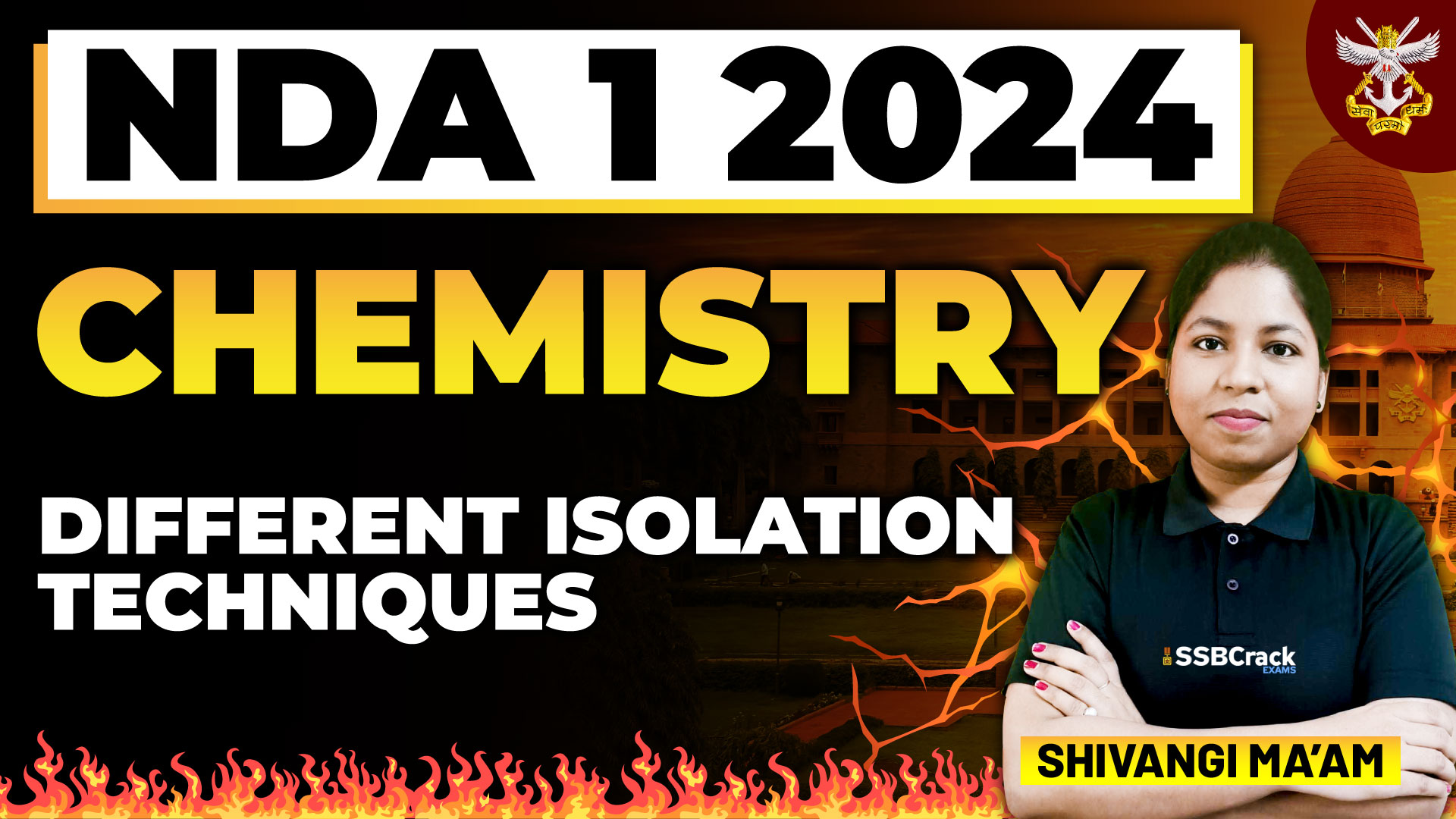In the ever-evolving landscape of chemistry, the process of isolating and purifying substances is of paramount importance. Whether in pharmaceuticals, materials science, or environmental analysis, the ability to extract and isolate specific compounds is fundamental to scientific progress. Recently, the National Defence Academy (NDA) hosted a lecture on the various isolation techniques employed in chemistry, shedding light on the intricacies of separation methodologies. NDA 1 2024 Chemistry Lecture provided a comprehensive overview of these techniques, emphasizing their significance in both academic research and practical applications.
Chromatography: Separating Compounds with Precision
One of the cornerstones of isolation techniques discussed during the lecture was chromatography. Chromatography encompasses a diverse range of methods, all based on the principle of separating components within a mixture based on their differential interaction with a stationary phase and a mobile phase. Gas chromatography (GC), liquid chromatography (LC), and thin-layer chromatography (TLC) were among the techniques elucidated.
Gas chromatography, for instance, relies on the differential partitioning of compounds between a mobile gas phase and a stationary liquid or solid phase. This technique finds extensive application in the analysis of volatile compounds, such as organic pollutants in environmental samples or aroma compounds in food products.
Liquid chromatography, on the other hand, employs a liquid mobile phase to separate compounds based on their interactions with a stationary phase packed within a column. High-performance liquid chromatography (HPLC), a variant of liquid chromatography, offers high resolution and sensitivity, making it indispensable in pharmaceutical analysis and biomolecule purification.
Thin-layer chromatography, though simpler in setup compared to GC and HPLC, is a powerful tool for quick qualitative analysis and purification of organic compounds. Its versatility and cost-effectiveness make it a popular choice in academic laboratories and industrial settings alike.
Extraction: Harnessing Solvent Power
Another crucial aspect of isolation techniques highlighted in the lecture was extraction. Extraction involves the selective partitioning of a compound between two immiscible phases, typically a solvent and a sample matrix. Liquid-liquid extraction and solid-phase extraction emerged as prominent methods discussed during the lecture.
Liquid-liquid extraction, also known as solvent extraction, exploits differences in solubility to separate compounds from a complex mixture. This technique finds widespread use in the purification of natural products, isolation of pharmaceutical intermediates, and extraction of metals from ores.
Solid-phase extraction, on the other hand, entails the adsorption of target compounds onto a solid sorbent, followed by elution with a solvent to recover the analytes of interest. Solid-phase extraction offers advantages such as simplicity, rapidity, and compatibility with automated systems, making it indispensable in analytical chemistry and environmental monitoring.
Distillation: Purifying Through Boiling Points
Distillation, a venerable technique dating back centuries, also found its place in the discourse on isolation techniques. Distillation exploits differences in boiling points to separate components within a mixture. Simple distillation, fractional distillation, and steam distillation were among the variants discussed during the lecture.
Simple distillation, suitable for separating components with a large difference in boiling points, is commonly employed in the purification of volatile liquids and recovery of solvents from reaction mixtures.
Fractional distillation, a more sophisticated variant, enables the separation of closely boiling components by utilizing a fractionating column to enhance vapor-liquid equilibrium. This technique plays a pivotal role in the petroleum industry for refining crude oil into various fractions like gasoline, diesel, and kerosene.
Steam distillation, meanwhile, is particularly useful for isolating volatile compounds, such as essential oils from plant materials, by entraining them in steam and subsequently condensing the vapor.
Conclusion: Advancing Chemistry Through Precise Isolation Techniques
The NDA 1 2024 Chemistry Lecture provided a comprehensive overview of the diverse array of isolation techniques at the disposal of chemists. From chromatography and extraction to distillation, each method offers unique advantages and applications in both academic and industrial settings. By mastering these techniques, scientists can unravel the complexities of chemical mixtures, paving the way for advancements in fields ranging from pharmaceuticals and materials science to environmental analysis and beyond. As chemistry continues to push the boundaries of knowledge and innovation, the importance of precise isolation techniques remains steadfast in driving scientific progress forward.



















